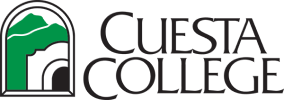
Program Summary
WELDING TECHNOLOGY - Associate in Science
2020 - 2021, 2021 - 2022, 2022 - 2023, 2023 - 2024, 2024 - 2025
The associate of applied science degree in Welding Technology is designed to prepare the individual for a career as a welding technician in the fabrication, construction, and manufacturing industries.
Career Opportunities
Required Courses (19 units)
Units: 19.0
ENGR 226
ENGINEERING DRAWING
4.0
WELD 270A
BASIC WELDING
3.0
WELD 270B
ADVANCED WELDING
3.0
WELD 270C
WELDING: GMAW & GTAW
3.0
WELD 277
METAL FABRICATION
3.0
3.0
WELD 280A
STRUCTURAL STEEL WELDING CERTIFICATION
3.0
OR
WELD 280B
PIPE WELDING CERTIFICATION
3.0
Plus 6-6.5 units of technical electives from the following:
Units: 6.0-6.5
WELD 275
BLUEPRINT READING AND INDUSTRY PRACTICES
3.0
WELD 276
WELDING POWER
3.0
WELD 273
METALLURGY
3.0
CTCH 200
WORKPLACE SAFETY- OSHA10
0.6
Total: 25.0-25.5
Program Outcomes
SLO i Safety Outcome – Demonstrate proper safety practices when working in a
welding environment.
SLO i Successful completion of safety exam. Completion of industry standard Job
Safety Analysis (JSA) forms as they pertain to all equipment and procedures in
the shop. Demonstrate correct use of Personal Protective Equipment (PPE) on a
daily basis.
Student Survey
Demonstrate welding skills sufficient to meet industry journeyman welder standards.
1 American Welding Society D1.1 Structural Welding Certification test with E7018 electrodes and the FCAW process in the vertical and overhead positions.
Student Survey.
Apply integrated knowledge with incremental skill improvement resulting in functional application of welding techniques.
2 Demonstrative weld completion and documentation of knowledge progress evaluation.
Student Survey.
Use proper hand, measuring and layout tools to fabricate welding projects.
3 Completion of shop projects which incorporate the use of common fabrication tools.
Student Survey.
Apply academic skills in reading, mathematics, chemistry and physics to the
application of welding skills
4 Record of traditional knowledge assessments followed by hands on application to welding procedures in the laboratory to produce weldments and projects which incorporate said objectives and outcomes.
Student Survey.
Demonstrate work attributes that contribute to personal success and contribute to the
goals of the company or organization for which one is employed.
5 Completed job portfolios. Professionalism evaluation as part of the grading
procedures of each course. Evaluate safety practices through subjective and objective
methods.
Student Survey